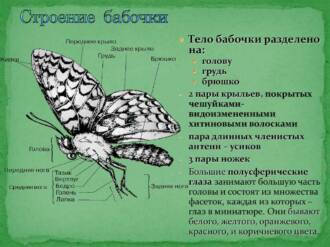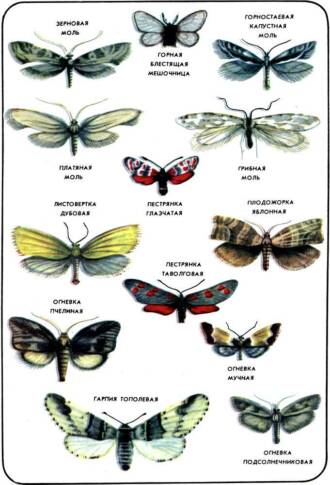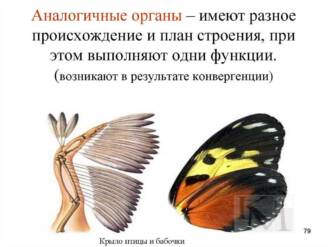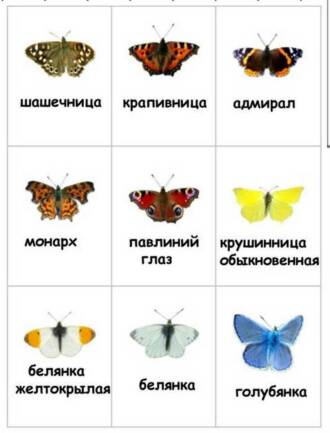
In the world of butterflies, there is a huge variety of species and forms, each of which has its own unique features. However, do butterflies have sex and how to distinguish a male from a female?
Determining the sex of a butterfly can be a daunting task, but there are some helpful tips and techniques to help you get there. First, pay attention to the size and color of the butterflies. Often males and females have different shades and patterns on their wings. Males are usually brighter and more saturated in color, while females may be paler and less expressive.
In addition, the gender of a butterfly can be determined by the shape and size of its body. For example, males may have a narrower and slender body, while females may have a fuller and rounder body. Also, pay attention to the antennae of the butterfly. In males, they often have a more developed and complex structure, while in females, they may be simpler and shorter.
It is important to note that not all methods for determining the sex of a butterfly are completely accurate. Some species of butterflies may have similar colors and shapes, making them difficult to distinguish. In such cases, it is recommended to contact experienced entomologists who can provide more accurate and reliable information about the field of the butterfly.
The appearance of butterflies and their sexual difference
The sex of a butterfly is an important aspect of its life cycle. You can distinguish a male butterfly from a female by a number of signs related to their appearance.
Color and patterns
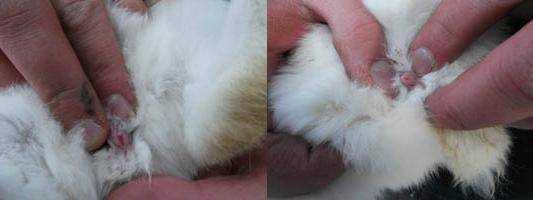
One way to determine the sex of a butterfly is to analyze its color and patterns on its wings. Males often have brighter, more saturated colors, as well as more complex patterns. In females, the colors may be more pale and monochrome, and the patterns may be simpler and less pronounced.
Shape and dimensions
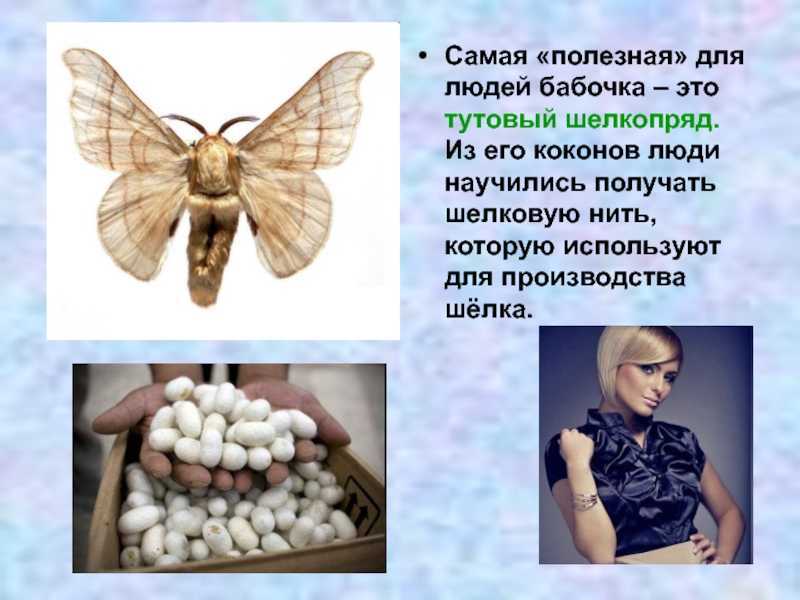
Another sign by which you can determine the sex of a butterfly is the shape and size of the wings. Males often have narrower and pointed wings, while females are wider and more rounded. Also, males may have longer and narrower caudal outgrowths on the hindwings.
Antennas
Another important sign by which the sex of a butterfly can be determined is the antennae. In males, the antennae are often more branched and fluffy, while in females, the antennae may be simpler and thinner.
So, there are several ways to determine the gender of a butterfly by its appearance. But it should also be borne in mind that there are species in which the sexual difference is not so pronounced, and a more detailed study may be required to more accurately determine the sex.
Features of the color of the wings in males and females
Determining the sex of a butterfly can be tricky, but there are a few distinctive wing color patterns that will help you distinguish between a male and a female.
Differences in coloration

In male butterflies, wings are usually bright and saturated in color, while in females, the color can be paler and more delicate. However, this rule is not always true and there may be exceptions.
Features of the pattern on the wings
The sex of a butterfly can also be determined by the pattern on its wings. In males, more complex and geometric patterns can often be seen, while in females, patterns can be simpler and less expressive.
Wing size and shape
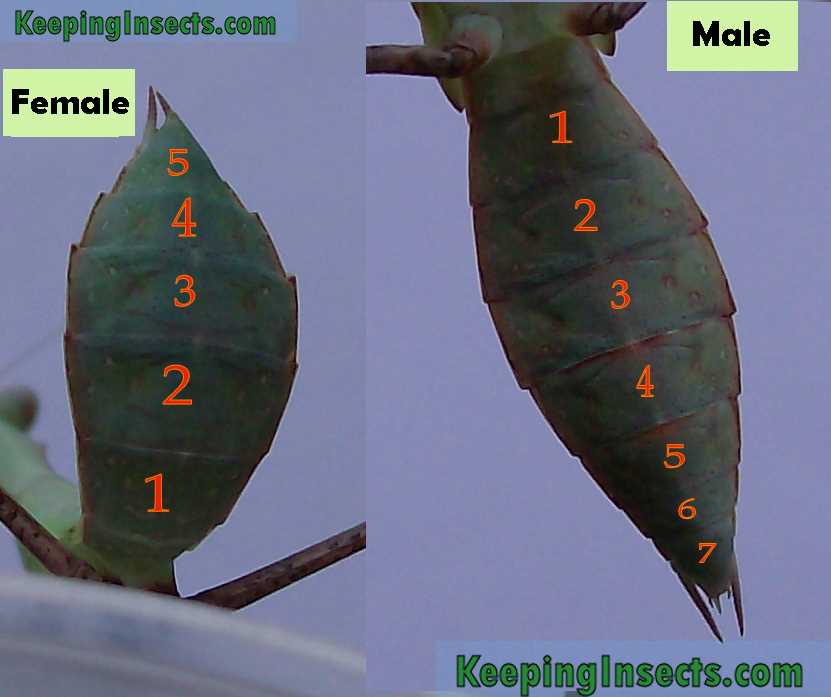
Another sign by which a male butterfly can be distinguished from a female is the size and shape of the wings. Males often have larger and broader wings than females. In addition, the shape of the wings may also differ, for example, in males they may be more pointed, and in females more rounded.
While these signs can help you determine the sex of a butterfly, it is important to remember that they are not always accurate. The best way to determine the sex of a butterfly is to study its anatomy and reproductive habits, which requires some knowledge and experience.
Analysis of the shape of the wings for sex determination

How to distinguish a male butterfly from a female? The question of the gender of butterflies may be of interest to many lovers of these beautiful insects. However, determining the sex of a butterfly visually can be difficult, especially when it comes to species of similar color. In such cases, analysis of the shape of the wings can help in determining the sex of the butterfly.
Do butterflies have gender? Yes, butterflies, like other insects, have a division into males and females. Male and female butterflies have differences in wing structure that can be used to determine sex. However, it is worth noting that not all species of butterflies have distinct differences in wing shape, so special equipment or microscopic analysis may be needed to accurately determine the sex.
Which gender butterflies have certain wing shapes? For example, in some species of butterflies, males have more pointed and narrow wings compared to females. In other species, differences between the sexes may show up in wing size or coloration. There are also species of butterflies in which males and females have an absolutely identical shape and color of wings.
The length and dimensions of the body as a sign of sex in butterflies
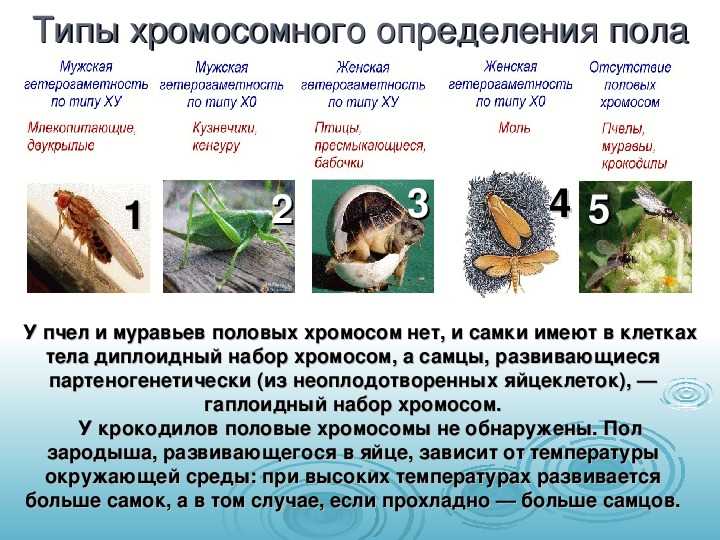
How to tell a male butterfly from a female? One way is to pay attention to the length and size of the body. In butterflies of different species, the sex of a man and a woman may differ in these parameters.
The sex of a butterfly can be determined by the length of the forewing. In males, the forewing is usually longer than in females. This is due to the peculiarities of reproduction and mating in butterflies. You can also pay attention to the size of the body as a whole - in males, they can be more massive and larger than in females.
Butterflies of what gender can be distinguished by the length and width of the hind wings. In males, the hind wings can be narrower and longer than in females. You can also pay attention to the coloring - in males it is often brighter and more saturated than in females.
If you want to more accurately determine the sex of a butterfly, you can refer to the specialized literature or seek help from specialist entomologists. They will be able to give more detailed advice and tell you about other signs by which you can determine the sex of a butterfly.
Features of the behavior of butterflies in the process of reproduction
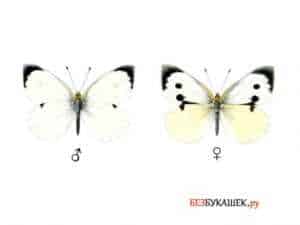
Sex determination in butterflies is an important aspect of the study of their behavior during reproduction. Unlike other animals, butterflies have certain characteristics that help determine their gender.
The sex of a butterfly can be determined by a number of different characteristics. One of the most obvious is the butterflies' appearance. Males and females may have different colors, wing patterns, or body sizes. However, there are some species of butterflies where the external characteristics of sex may be similar or variable, so more detailed research is required.
Butterflies of what sex are actively involved in the process of reproduction? This question is important for understanding their behavior. Usually, males are active in finding a mate using various signals, such as scent or light signals. Females, in turn, can attract males with their color or smell.
Determining the sex of butterflies is of great importance for studying their behavior during reproduction. This helps scientists understand how mate selection occurs, what factors influence successful reproduction, and what strategies butterflies use in the process. The study of the sex of butterflies can also help in the conservation of their population and the adoption of measures to protect their habitat.
Use of binoculars and loupes for more accurate gender determination

Determining the sex of a butterfly is not always easy at a glance. However, with the help of binoculars and loupes, you can increase the details and get more accurate information about the field of the butterfly.
Binoculars allow you to enlarge the image of a butterfly and see its details in higher resolution. Thus, you can pay attention to the features characteristic of a particular gender. For example, males of some species of butterflies may have specific patterns or hairs on their wings that females do not have.
Loupes can also be helpful in determining the sex of a butterfly. They allow a closer look at small parts of the butterfly's body, such as antennae or genitals. Some types of butterflies have differences in the structure of these parts depending on the sex. Thus, using a magnifying glass, you can detect such differences and determine the sex of the butterfly.
Using binoculars and loupes to determine the sex of a butterfly can be especially helpful when working with small or complex species of butterflies. It is also important to consider that not all types of butterflies have external features that can be seen with a normal eye. Therefore, the use of binoculars and loupes may be a necessary step when studying the sex of a butterfly.
Application of molecular methods to identify the sex of butterflies
Determining the sex of a butterfly is an important aspect of research and reveals a lot about its biology and behavior. Standard sex determination methods, such as external signs, morphological features, or behavioral characteristics, may not be accurate or reliable enough. In this case, molecular methods become a useful tool for determining the sex of butterflies.
Molecular methods are based on the study of the genetic material of butterflies and allow you to accurately determine the sex of an individual. One of the most common methods is the polymerase chain reaction (PCR). To do this, it is necessary to extract DNA from the tissues of a butterfly and amplify a specific genetic region that differs in males and females. After that, it is possible to determine the sex of the butterfly using electrophoresis, based on the presence or absence of a specific sex chromosome.
The use of molecular methods to identify the sex of butterflies has a number of advantages. First, they allow achieving high accuracy and reliability of results. Secondly, these methods can be applied in the early stages of butterfly development, when the external signs of sex are not yet clearly expressed. In addition, molecular methods allow researchers to obtain data on the sex composition of the population and study the dynamics of changes in it.
In conclusion, the use of molecular methods for sex identification of butterflies is an efficient and accurate way to determine the sex of an individual. This is especially important for studies related to the biology and behavior of butterflies, as well as for population and ecological studies. Such methods provide more complete information about the sex composition of the population and a better understanding of its dynamics and functioning.
Collecting and preserving male and female specimens
Determining the sex of butterflies is an important aspect for collecting and preserving various specimens. Many collectors are interested in what gender butterflies they have, and how to distinguish a male from a female.
How to tell a male butterfly from a female? There are several methods to determine the sex of a butterfly. One of them is to study external features. Female butterflies often have paler wings, while males may have brighter wings or specific patterns. You can also pay attention to the size and shape of the body.
Another method is to study anatomical features. Male butterflies usually have pincers or combs on their abdomens, which they use to grasp females during mating. Females do not have these devices.
If you are planning to collect butterflies, you might be interested in having as many different male and female specimens as possible. To do this, various methods of catching butterflies can be used, including the use of light traps or baits. It is also useful to study the behaviors and habitats of different species of butterflies in order to increase the likelihood of finding both males and females.
It is important to store the collected butterflies in the right way so that they do not lose their attractiveness and value. To do this, they should be carefully attached to the substrates using special pins or glue. It is also recommended to store butterflies in special boxes or plastic containers with cotton or cardboard inserts to prevent damage.
The value of sexing butterflies for scientific and practical purposes
Determining the sex of butterflies is an important aspect for scientific and practical research. Knowing the sex of a butterfly allows scientists to investigate various aspects of their life, behavior and reproduction. In addition, sex determination of butterflies has practical implications for population control and plant protection.
How to tell a male butterfly from a female? There are several ways to determine the sex of butterflies. One of them is to analyze external features. Male butterflies usually have brighter colored wings and a more graceful shape than females. In addition, males may have more developed antennae or other external organs that are used to attract females.
Do butterflies have gender? Yes, butterflies have a gender. Like many other animals, butterflies have a division into males and females. Determining the sex of butterflies allows scientists to study various aspects of their behavior, reproduction and interaction with the environment. It is also important for practical purposes, such as controlling the population of harmful butterflies or pollinating plants.
In conclusion, sex determination of butterflies is of great importance for scientific and practical purposes. This allows scientists to study various aspects of the life and behavior of butterflies, as well as control the population and protect plants. Various methods for determining the sex of butterflies allow for a more accurate study of these amazing creatures and their role in the ecosystem.


